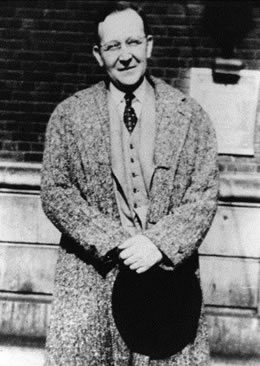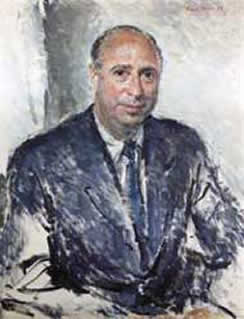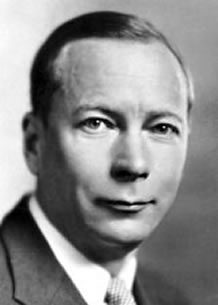Philip R. Liebson
Chicago, Illinois, United States
Dedicated to the memories of Irving S. Wright and Stephen S. Scheidt, former colleagues at the New York Hospital-Cornell University Medical Center.
Much of the background for this essay was provided by the Mueller-Scheidt Special Report, to which I am grateful.1 Steve Scheidt was a colleague of mine at Cornell and Bellevue Hospital, and before that we knew each other when we both grew up in the same apartment house in Forest Hills, NY.
The history of the development of anticoagulants involves a medical student who was previously denied admission to his medical school, sweet clover, and a physician who was gravely ill for months with thrombophlebitis at age 37, but lived to 96 years of age. The agents we focus on are heparin and dicumarol, the intravenous and oral anticoagulants that were the predecessors of a burgeoning group of anticoagulants that are under current use.
As with many discoveries, such as the use of penicillin by Fleming, the importance of observation and the prepared mind was key to the discovery of heparin, the first true anticoagulant, in 1916. At that time, researchers were attempting to develop drugs that produced hemostatic effects by procoagulant properties. In the late 19th century, an experimental model for the study of hemostasis was developed by Schmidt-Mulheim, called “peptone shock.”2 Peptone was injected into the animal and an anticoagulant originating in the liver was released. In the early 20th century, experimental studies on shock continued to demonstrate evidence of anticoagulation. A water-soluble substance was isolated from the liver of the animal. It was heparin, but at that time it was unnamed and not further evaluated.

The next major development came in 1915. At Johns Hopkins, perhaps the most prominent expert on coagulation, William Howell was studying procoagulant effects on experimental animals. A young medical student at the University of California, Jay McLean, felt that his future career as an academic surgeon could better be achieved by his transfer to Johns Hopkins Medical School. Despite a denial of admission, McLean persisted in gaining a foothold there and secured a position in Howell’s laboratory in isolating a thromboplastic material. In order to perform this task, he had to find a purer procoagulant for his isolation. He found that a phosphatide from the liver, initially procoagulant, eventually lost this property and became anticoagulant. McLean, possibly perplexed by this finding, told his mentor “Dr. Howell, I have discovered antithrombin.” McLean named this substance “heparphosphatide.”1
The results were presented orally and in print by McLean in 1916. The title of the paper “The Thromboplastic Action of Cephalin,” gave no hint of the significance of this discovery.3 Howell, in fact, was against reporting the discovery, and McLean decided that a research fellowship at the University of Pennsylvania would be more suitable. He eventually became a surgeon, but did not pursue an academic career.
Meanwhile, Howell had second thoughts about the importance of heparphosphatide and pursued studies on the substance. In 1918 he renamed it heparin. Over the next decade he and coworkers further purified it. Howell apparently did not see any further use for the substance and provided a Baltimore pharmaceutical firm with his techniques. Unfortunately, the company was unsuccessful in providing material with low toxicity and high potency for animal use.1
The breakthrough came in the late 1920s and early 1930s by three teams of independent investigators in Toronto, Stockholm, and Copenhagen. Interestingly, the Toronto team was headed by CH Best, who with Banting had previously isolated insulin. They realized that heparin could be isolated from the lung as well as the liver. By 1935 a purified heparin was developed in Stockholm, and it was confirmed to be a sulfated glycosaminoglycan.4
In that year, heparin was first injected successfully into human volunteers by the Stockholm team. In short order, a surgeon at one of the Stockholm hospitals, Clarence Crafoord, who was an expert in performing embolectomies in severe cases of pulmonary embolus, began to use heparin post-operatively to prevent venous thromboembolism.5 His interest in heparin had in fact been the spur for the development of a purified heparin when in 1929 he approached the Stockholm research team for its use. At the time, the purification of heparin had not reached the stage that would allow him to use it on patients.

Over the next few years, heparin began to be used in Canada and Sweden. In 1938, Irving S. Wright, a young professor of clinical medicine at Columbia University became gravely ill with thrombophlebitis after an operation for appendicitis. He recovered, but this led him to seek methods of preventing or treating this condition. Wright had a young patient with recurrent thrombophlebitis and was aware of the use of heparin in Toronto. He received a supply of heparin from Best and provided 16 days of intravenous use of heparin on his patient, with successful recovery.6 By the early 1940s, heparin came into standard use and clinical trials confirmed its efficacy in thromboembolic disorders.
Drugs such as heparin were later found to have other beneficial effects, such as enhancing endothelial function and suppressing inflammatory responses. But that is a story for another time.
The story of dicumarol begins in the late 19th century in America when many farmers from Scandinavia and Germany settled in the US northern plains states. Because of the harsh climate and poor use of soil, standard crops for feeding animals could not be supported. These farmers were aware from their experience in Europe that sweet clover plants were hardier than traditional feed crops. They imported sweet clover from Europe and it thrived in the harsh conditions. Over the next few decades, a fatal hemorrhagic disease developed in the cattle grazing on sweet clover. By 1924, veterinary pathologists had isolated the cause as spoiled sweet clover and attributed the condition to a prolonged clotting time.7 Fresh clover did not produce this condition and transfusion from healthy cattle cured it.
Our story now takes us over to Denmark. In 1929 Henrik Dam, a Danish investigator, found that processed feed was causing hemorrhages in chicks.8 By 1935 he had isolated prothrombin deficiency as a cause and postulated a sterol that would prevent bleeding which he called “Vitamin K.”9 The structure of Vitamin K was eventually solved by Edward Doisy, a researcher at St. Louis University. Both he and Dam received the Nobel Prize in Medicine or Physiology in 1943 for its discovery.
Meanwhile, there was still the problem of spoiled sweet clover disease in the northern plains. The region was now in the throes of the dust bowl, both animals and crops were decimated, and agriculturalists were still unsuccessful in solving the problem. Karl Paul Link, an agriculturist working at the University of Minnesota, was attempting to isolate the hemorrhagic agent in sweet clover when he moved to the Agricultural Experiment Station at the University of Wisconsin.10

There had been a problem with sweet clover aside from its hemorrhagic properties when spoiled. Even when fresh its taste was bitter despite its sweet smell. Both properties were due to a substance called coumarin. In fact, coumarin was widely used for its odiferous properties to scent tobacco, vanilla, and perfumes. When an Englishman pronounced a tobacco “bloody good,” there was more to the remark than he thought!
Yet there was still no link in the mind of Link between coumarin and hemorrhage. Things were moving rapidly in the biochemistry field however. The prothrombin time (Quick test) was developed in 1935 and in 1937 Amand Quick demonstrated elevations of prothrombin times in sweet clover and hemorrhagic chick diseases. In 1939, Harold Campbell, an associate of Link, saw a pure, crystalline agent on a microscope slide and reported it to Link, who was still working at the biochemistry building at the University of Wisconsin. In 1940, they reported the agent which turned out to be 3,3’-methylenebis(4-hydroxycoumarin), shortened to “dicumarol,” a product that would eventually be used as an anticoagulant for several decades.11 Later investigation indicated that coumarin in fresh clover was not an anticoagulant but with spoilage, it was oxidized to 4-hydroxycoumarin and with further changes formed dicumarol.
It was late 1940 when human volunteers began to receive dicumarol at Wisconsin General Hospital. In the next two years, reports of clinical use came from the Mayo Clinic and the New York Hospital-Cornell Medical Center, the latter from Wright, who had moved from Columbia. Wright applied the first therapeutic use of dicumarol to his previous patient who had been instrumental in his earlier studies of heparin.1
The next step was the use of dicumarol in patients with myocardial infarction. Preliminary reports of success were presented separately by ES Nichols in 1944 and Wright in 1946.12,13 A randomized clinical trial sponsored by the American Heart Association reported in 1948 showed the success of treatment in myocardial infarction.14 In the 1950s and into the early 1960s, dicumarol was used fairly routinely in myocardial infarction.
That is the story for the early use of heparin and dicumarol as anticoagulant agents. We should add a brief sequel. Link developed tuberculosis in 1945 and in 1946, returning to his laboratory in Wisconsin, he became interested in a compound that could be used as a rat poison. The compound had been developed over the last several years by a colleague at the biochemistry unit. It was a reliable rat poison but had to be patented. The patent rights were given to the Wisconsin Alumni Research Foundation (WARF) and you can guess what they named the compound. But that is another story.
Wright received many honors, including becoming president of the American Heart Association. This author met him on several occasional while he was a fellow in cardiology and attending at New York Hospital-Cornell Medical Center. By that time there was some skepticism about the routine use of anticoagulants after myocardial infarction, especially since patients were no longer kept in bed for several weeks of inactivity and the threat of thrombophlebitis had diminished.
In 1957 Wright invited McLean to New York for a symposium on the discovery of anticoagulants. McLean died suddenly while there. He was 66.
Editor’s note: No rat poison for patients
William Evans, MD, DSc, FRCP (Lond), HonDSc (Wales) (1895–1988) was a distinguished and flamboyant cardiologist at the London Hospital. His lectures at the National Heart Hospital were popular and widely attended by postgraduate physicians from all over the world. He was dogmatic in his way, and would make his students promise to abide to what he felt were sound clinical maxims by writing in their note books the following:
- I vow to gaze a long time at the neck veins.
- I promise never to give my patients potassium.
- I will never prescribe rat poison (meaning warfarin).
Point (1) still applies, though more honored in the breach than the observance. But in 1960 there were no echocardiograms, no CT-scans, and cardiac catheterization was in its infancy. For diagnosis physicians had to rely to a great extent on physical diagnosis and that included examining the pulsations of the jugular veins. Evans taught that much could be learned from examining the neck veins, describing the “a wave” of atrial contraction is a flick and the “v wave” of ventricular contraction as a surge.
In defense of Dr. Evans’ antipathy to potassium it must be remembered that in the 1950’ doctors still used mainly mercurial diuretics, and that thiazides had only just become available. Also knowledge of electrolytes was still much in its infancy. Accordingly the indications for using potassium were more limited, or at least not as well understood.
But in the case of anticoagulants time has clearly proven Dr. Evans wrong. Half a decade later the indications for anticoagulants continue to expand. But as new anticoagulants are being developed and become less expensive, it may well be that warfarin will eventually no longer be used, thus reaffirming Dr. Evans’ injunction not to give rat poison to patients.
References
- Mueller RL, Scheidt S. History of drugs for thrombotic disease. Discovery, development, and directions for the future. Circulation 1994; 89:432-449.
- Schmidt-Mulheim A. Beitrage zur kennt-niss des peptons und siner physiologischen bedeutung. Du-Bois Reymond. Arch Physiol 1880:33-35.
- McLean J. The thromboplastic action of cephalin. Am J Physiol 1916;41:250-257.
- Jorpes E. On heparin, its chemical nature and properties. Acta Med Scand 1936;88:427-433.
- Crafoord C. Report on post-operative treatment with heparin as a preventive of thrombosis. Acta Chir Scand 1937; 79:407-426.
- Wright IS. Experience with anticoagulants. Circulation 1959; 19:10-113.
- Schofield FW. Damaged sweet clover: the cause of a new disease in cattle simulating hemorrhagic septicemia and blackleg. J Am Vet Med Assoc 1924; 64:553-572.
- Dam H. Cholesterinstoffwechsel in huhnereien und hunchen. Biochem Z 1929; 215:475-492.
- Dam H. Antihemorrhagic vitamin of the chick: occurrence and chemical nature. Nature 1935; 135:652-653.
- Link KP. The discovery of dicumarol and its sequels. Circulation 1959; 19:97-107.
- Campbell HA, Roberts WL, Smith WK, Link KP. Studies of the hemorrhagic sweet clover disease: I. The preparation of hemorrhagic concentrates. J Biol Chem 1940; 136:47-55.
- Nichol ES, Page SW. Dicumarol therapy in acute coronary thrombosis: results of fifty attacks. J Fla Med Assoc 1946; 32:365-370
- Wright IS. Experience with dicumarol (3, 3’-methylene-bis –[4-gydroxycoumarin]) in the treatment of coronary thrombosis with myocardial infarction. Am Heart J 1946; 32:20-31.
- Wright IS, Marple CD, Beck DF. Report of the committee for the evaluation of anticoagulants in the treatment of coronary thrombosis with myocardial infarction, Am Heart J 1948; 36:801-815.
PHILIP LIEBSON, MD, graduated from Columbia University and the State University of New York Downstate Medical Center. He received his cardiology training at Bellevue Hospital, New York and the New York Hospital Cornell Medical Center, where he also served as faculty for several years. A professor of medicine and preventive medicine, he has been on the faculty of Rush Medical College and Rush University Medical Center since 1972 and holds the McMullan-Eybel Chair of Excellence in Clinical Cardiology.
Highlighted in Frontispiece Volume 5, Issue 2 – Spring 2013
